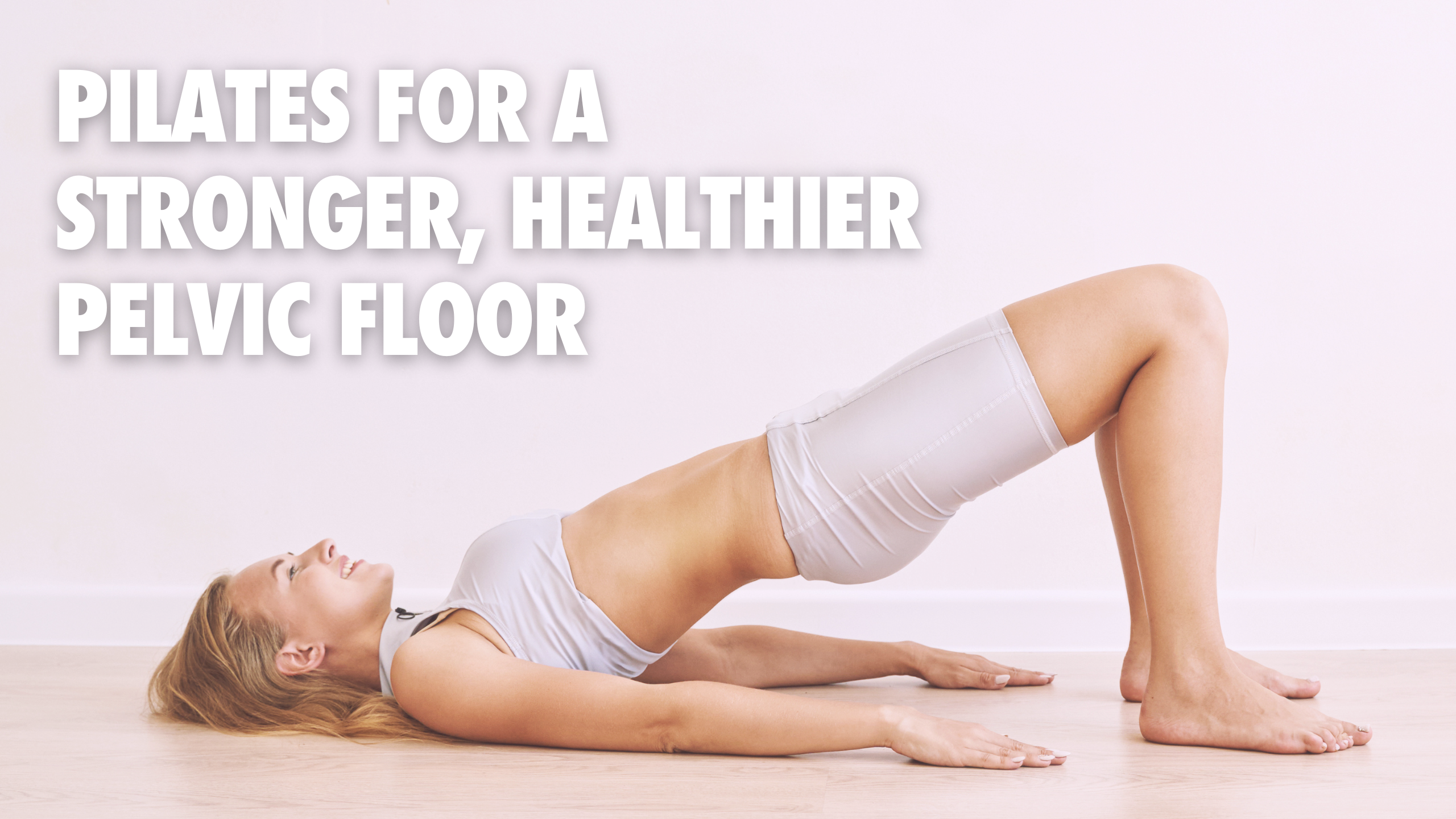Pilates for a Stronger, Healthier Pelvic Floor

One in three women will experience pelvic floor disorder in her lifetime; however, most women don't know enough about pelvic floor health. May is Pelvic Floor Awareness Month, and this month is the perfect time to learn more about keeping pelvic floor muscles strong and healthy. Although common, most women are embarrassed to discuss pelvic floor issues and, as a result, remain untreated. This month, let's destigmatize pelvic floor dysfunction and demystify this lesser-spoken-of part of the body!
Pelvic floor muscles support your organs in the pelvic region and play a crucial role in controlling bladder and bowel movements. In addition, the pelvic floor contributes to vital sexual function. Weakness or damage to the pelvic floor muscles can lead to a variety of issues, such as urinary incontinence, pelvic organ prolapse, and sexual dysfunction. Therefore, it is important to maintain the health and strength of the pelvic floor muscles through exercises like Kegels, proper posture, and avoiding heavy lifting or straining.
Pilates is the perfect solution to strengthening pelvic floor muscles as it focuses on strengthening muscles in the abdomen, back, and pelvic floor. The slow and controlled movements help to activate and strengthen the pelvic floor muscles, which can help to improve bladder control and prevent urinary incontinence. Pilates also emphasizes proper posture, which can help to reduce pressure on the pelvic floor and prevent further pelvic floor dysfunction. Below are three pelvic floor exercises that you can try today on your Frame Reformer:
- Pelvic Curls: Lie on your back on the reformer with your knees bent and feet flat on the Footbar. Inhale to prepare, then exhale as you engage your pelvic floor muscles and lift your hips off the carriage. Inhale to hold at the top, then exhale to lower back down. This exercise helps to strengthen the pelvic floor muscles and improve their ability to support the pelvic organs.
- Leg Circles: Lie on your back on the reformer with your legs straight up in the air. Inhale to prepare, then exhale as you engage your pelvic floor muscles and circle your legs in a clockwise direction. Inhale to complete the circle, then exhale as you reverse the direction. This exercise helps to improve pelvic floor muscle coordination and control.
- Spine Stretch: Sit on the reformer with your legs straight out in front of you and your hands holding onto the straps. Inhale to prepare, then exhale as you engage your pelvic floor muscles and roll your spine forward, reaching your hands towards your feet. Inhale to hold at the bottom, then exhale to roll back up. This exercise helps to improve pelvic floor muscle strength and control.

